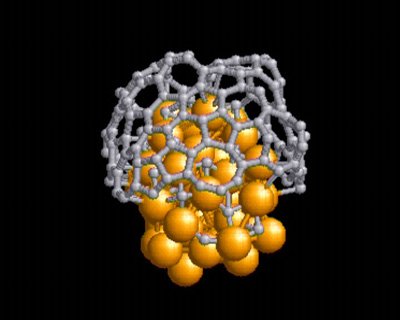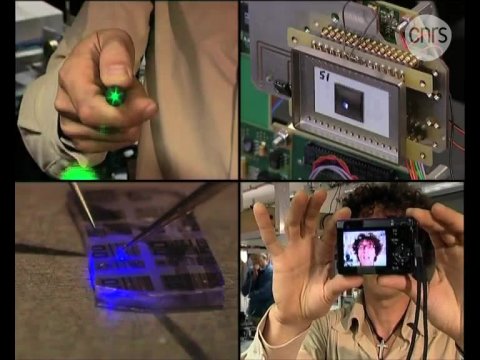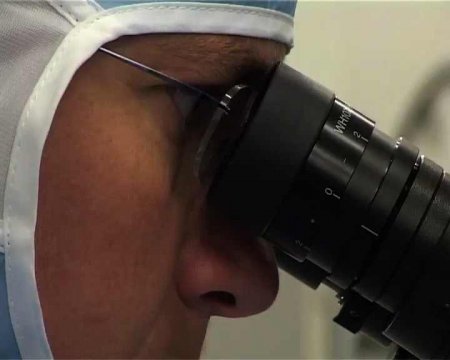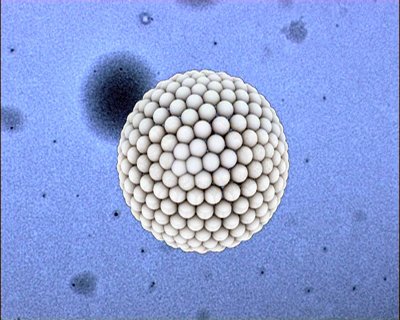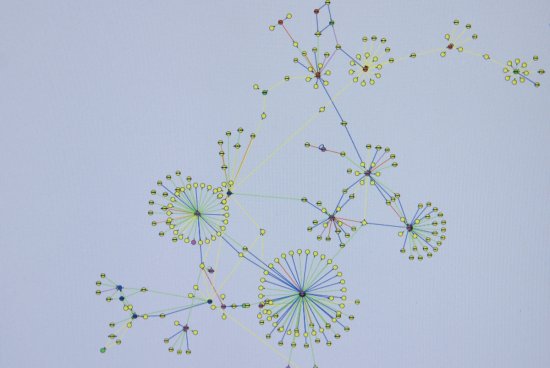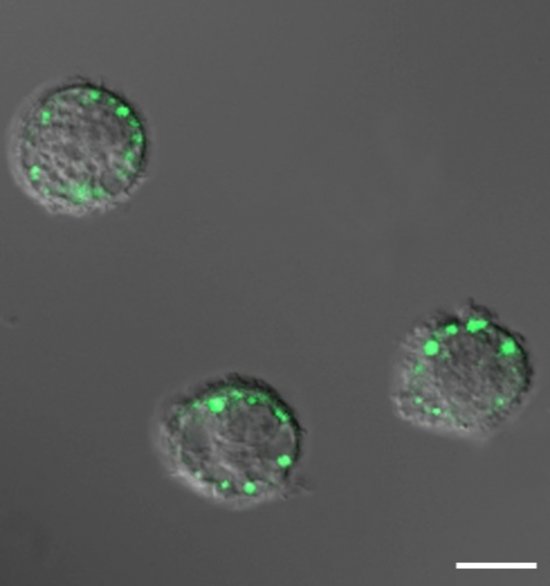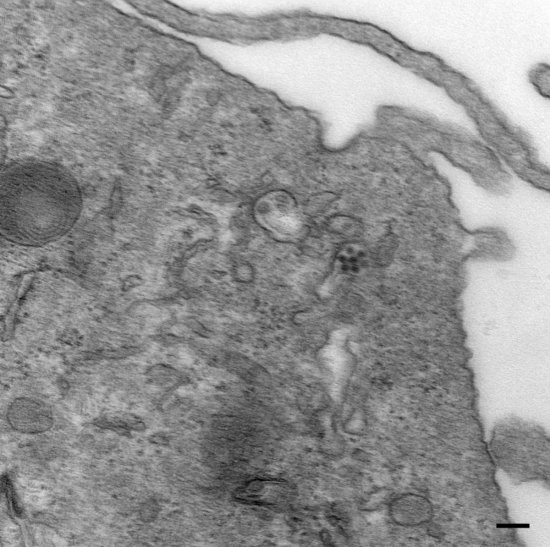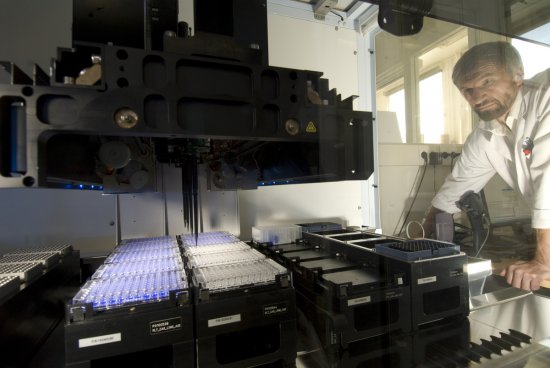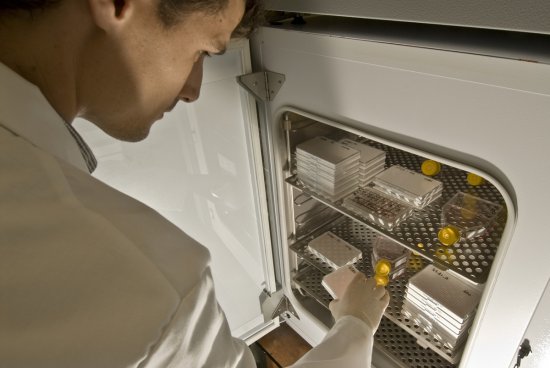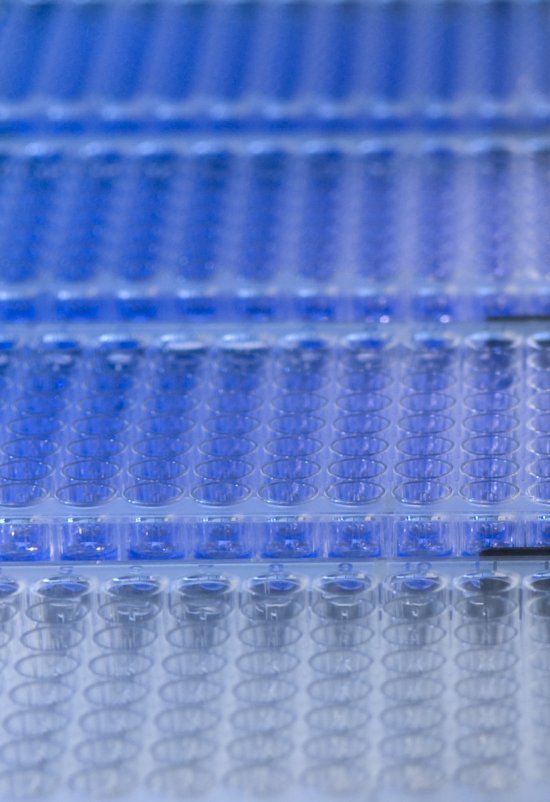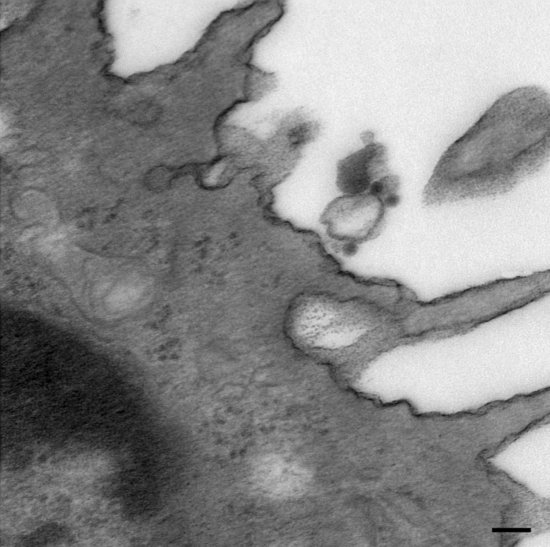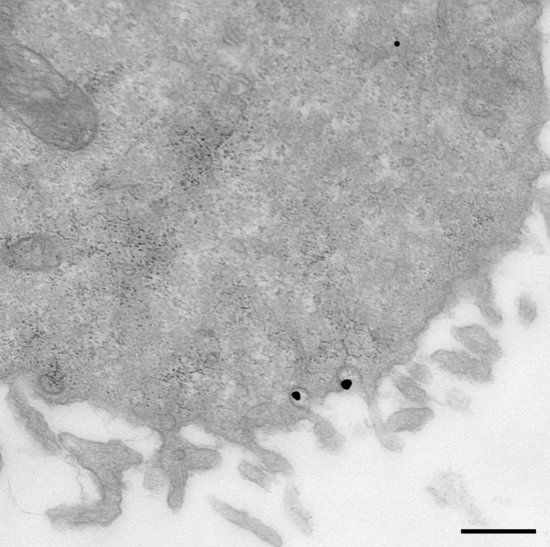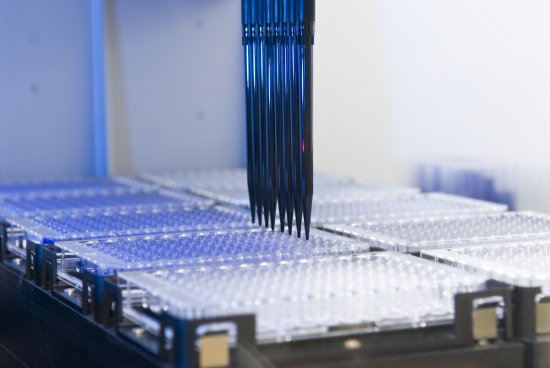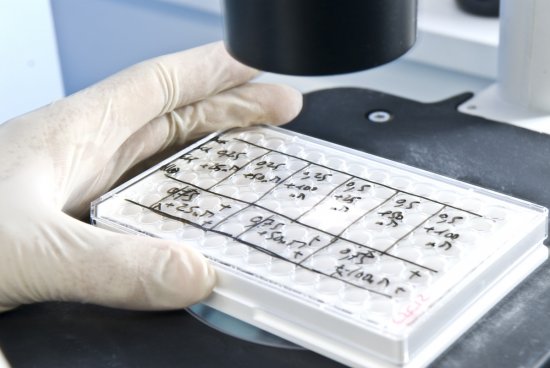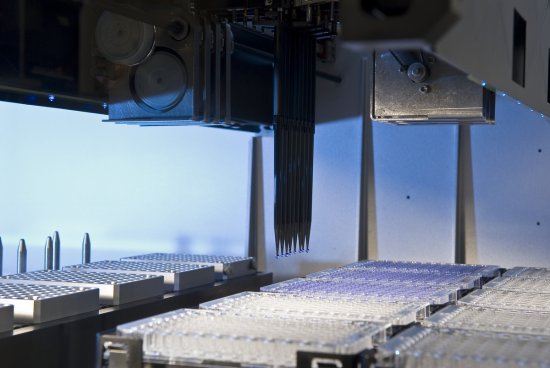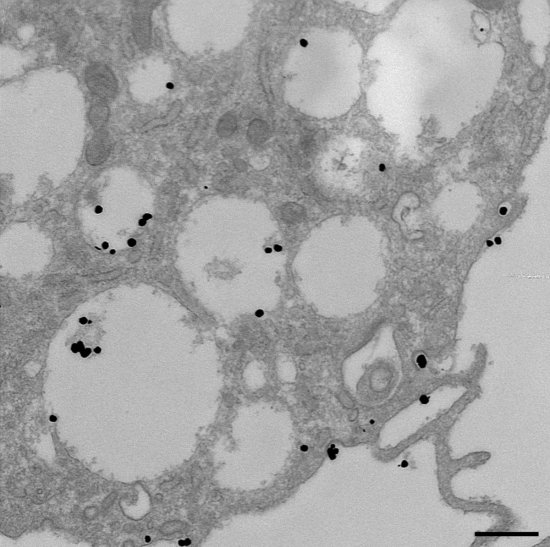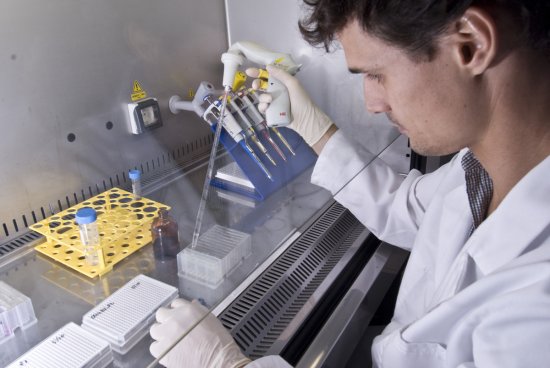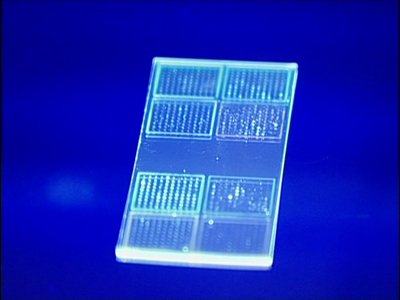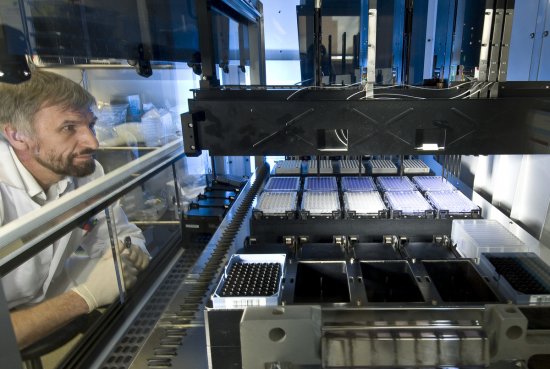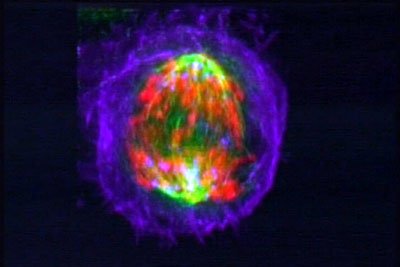Film for consultation only
© CNRS Images - 2008
Reference
1966
Biochips
Series title
Nanosciences and NanotechnologiesThis film derives from the Nanosciences and Nanotechnologies DVD.
At the interface between electronics and biology, one important application of nanotechnologies in biology and medicine is the development of biochips. The first biochips were DNA chips, but today they have diversified: protein chips, cell chips, etc. Aren't they becoming real laboratories on chips
Xavier Gidrol (Functional Genomics Laboratory of the Evry Genopole) describes the principle of DNA chips, which make it possible to study all 25,000 human genes on a simple glass plate of about a square inch. The expression of a gene is detected by a fluorescent marker that lights up or out. Its main application is the detection of all genes involved in a disease, such as rheumatoid arthritis.
At the CEA Biochips Laboratory in Grenoble, a team works on cell chips. François Chatelain explains their interest for the researcher who can access biological phenomena at the scale of the individual cell, whereas yesterday's biologist could only study the average behaviour of a vast population. One application is the study of the toxicity of a product, the cell chip replacing animal experimentation.
The most sophisticated biochips are laboratories on chips that integrate all phases of a medical analysis on a microdevice that combine fluidic, biological and electronic functions. An electric-field guide nanodrop will be enough to make an analysis.
Duration
Production year
Définition
Color
Sound
Version(s)
Original material
The use of media visible on the CNRS Images Platform can be granted on request. Any reproduction or representation is forbidden without prior authorization from CNRS Images (except for resources under Creative Commons license).
No modification of an image may be made without the prior consent of CNRS Images.
No use of an image for advertising purposes or distribution to a third party may be made without the prior agreement of CNRS Images.
For more information, please consult our general conditions

